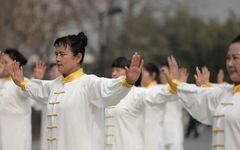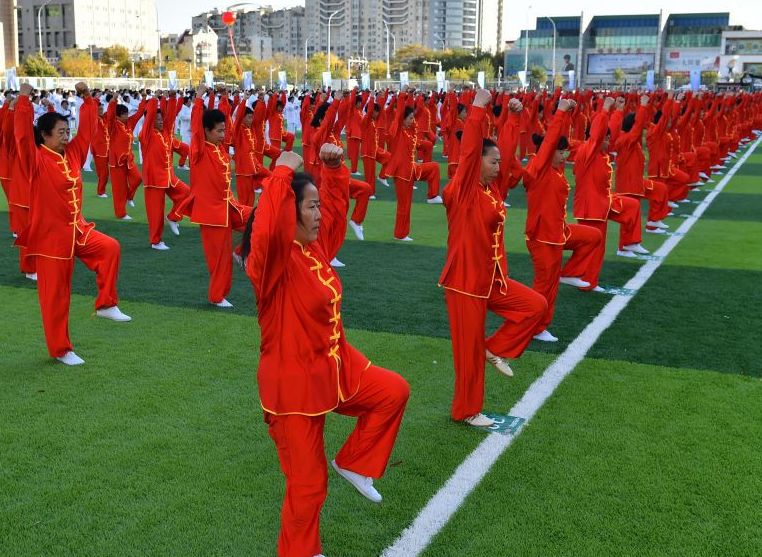
The 14th National Games mass performance activities are in full swing.
Fitness Qigong, as one of the four major mass event performance categories, attracts enthusiasts from all over the country to participate in competitions.Of course, our fitness Qigong enthusiasts in Sichuan are also actively preparing for the finals, wishing them great success!Qigong has a long history in our country and has always been a method of exercise for health preservation.Fitness Qigong was established as the 97th sports event by the General Administration of Sport of China in 2003.Many people enjoy practicing Qigong in their daily lives, so today we will discuss the benefits of long-term practice of fitness Qigong and the key principles of practice.

What is Fitness Qigong?
Fitness Qigong is a traditional national sport that combines physical movement, breathing techniques, and psychological adjustment as its main form of exercise, and is an important part of China’s long-standing culture.The main types of popular fitness Qigong currently include the following nine forms:Fitness Qigong · Yi Jin Jing (易筋经);Fitness Qigong · Wu Qin Xi (五禽戏);Fitness Qigong · Liu Zi Jue (六字诀);Fitness Qigong · Ba Duan Jin (八段锦);Fitness Qigong · Shi Er Duan Jin (十二段锦);Fitness Qigong · Da Wu (大舞);Fitness Qigong · Dao Yin Yang Sheng Gong Shi Er Fa (导引养生功十二法);Fitness Qigong · Ma Wang Dui Dao Yin Shu (马王堆导引术);Fitness Qigong · Tai Chi Yang Sheng Zhang (太极养生杖).
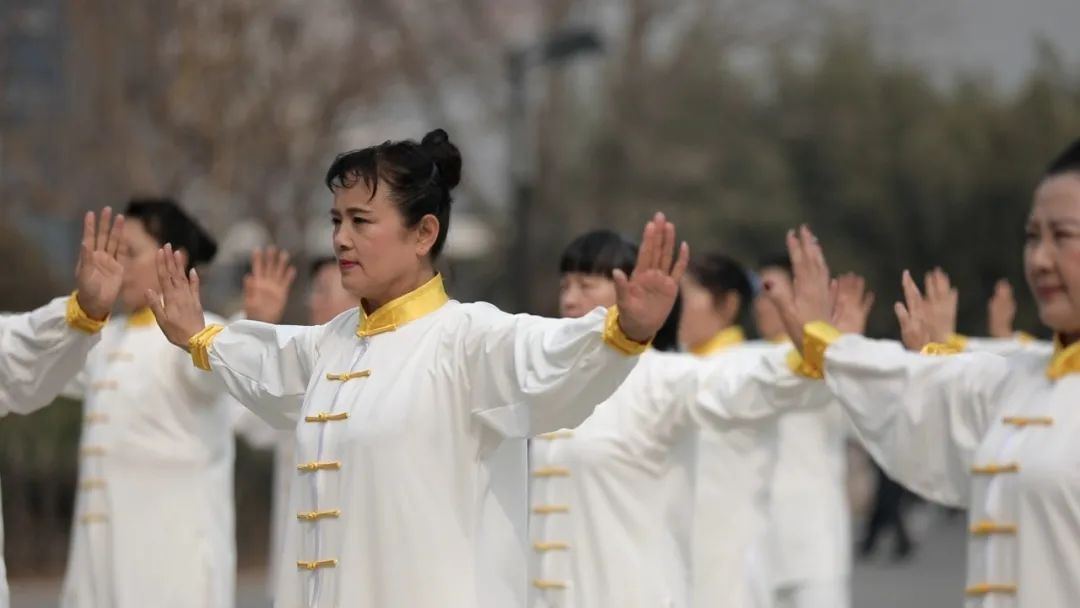

The Benefits of Practicing Fitness Qigong!
People often ask why long-term practice of fitness Qigong is beneficial to the body and what aspects it improves and enhances.It can be said that fitness Qigong primarily regulates the balance of the human nervous system and other systems through comprehensive training of intention, breath, and form, allowing the functions of various organs to perform normally, thus producing a series of positive effects on the body.
Repair and Adjust Nervous Function
Long-term practice of fitness Qigong can adjust the autonomic nervous system and enhance sensory, motor, and cognitive functions.
Improve Heart, Circulation, and Microcirculation
Long-term practice of fitness Qigong can open more capillaries, accelerate blood flow within the vessels, promote tissue metabolism, and lower plasma estradiol, effectively combating aging and giving the skin a rosy glow.
Significantly Enhance Lung Function
During the practice of fitness Qigong, oxygen consumption and carbon dioxide expulsion decrease, which can reduce the frequency of breathing.
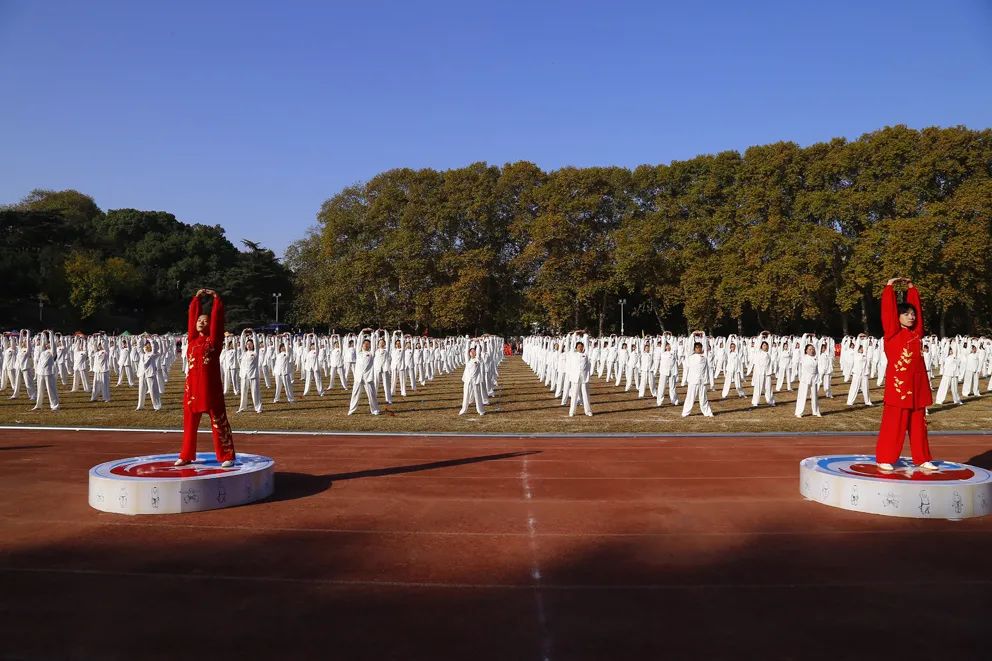
Strengthen Digestive Function
Practicing fitness Qigong can increase saliva secretion and digestive juices, enhancing intestinal peristalsis.
Reasonably Regulate the Pituitary Gland and Endocrine Organs
For example, practicing fitness Qigong can lower the metabolism levels of adrenaline and norepinephrine, reduce growth hormone, and lower cholesterol levels in the blood.It is said that through practicing fitness Qigong, some symptoms related to endocrine disorders in patients with diabetes and hyperthyroidism can be controlled.
Eliminate Fatigue and Restore Energy
Modern people often feel mentally unwell and physically slack under fatigue. Practicing fitness Qigong can effectively eliminate fatigue, relieve and restore excessive excitement of the nervous system, and uplift the spirit.
Enhance Temperament and Cultivate Character
True beauty lies in the harmony of external and internal beauty, as well as the unity of body and mind. Practicing fitness Qigong can effectively enhance a person’s spirit and temperament, making one more “beautiful”!
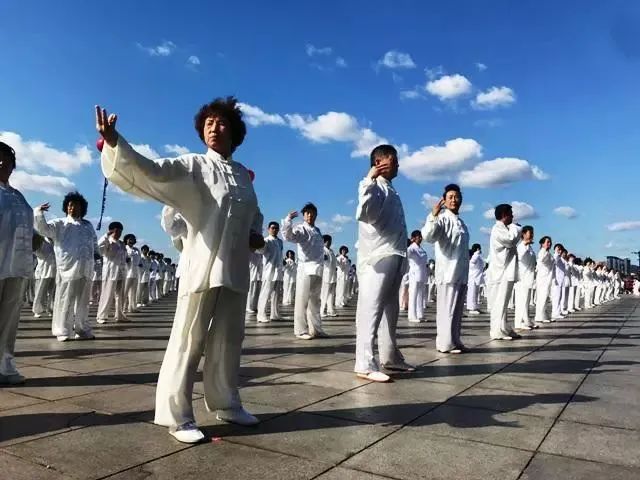

Six Key Principles of Practicing Fitness Qigong
The key principles of practicing fitness Qigong can be summarized in twenty-four characters: Relax, Calm, Natural, Intention and Breath Follow, Movement and Stillness Combine, Practice and Nourishment Together, Spirit at Ease, Gradual Progress.01
Relax, Calm, Natural
Relax, calm, and natural are the basic principles of practice and the most fundamental rules. To master the principles of practice, one must first start with relaxation, calmness, and naturalness.Relaxation refers to the relaxation of both the mind and body. Calmness means quietness; first, the thoughts and emotions must be calm, that is, peaceful and serene. Naturalness means that the body, breath, and intention should all remain relaxed and natural.The relaxation and calmness during practice are conducted under the premise of naturalness. When the posture, breathing, and psychological adjustments during practice conform to nature, the entire body will inevitably reach a state of relaxation and calmness, and the two complement each other.02
Intention and Breath Follow
In the principle of intention and breath following, intention refers to psychological adjustment, while breath refers to the breath energy. Fitness Qigong primarily practices intention and breath, with intention being the leading factor. Practicing intention is to eliminate distractions and enter a relaxed and tranquil state, achieving the harmony of intention and breath through regular psychological adjustments. Practicing breath mainly refers to training the breath energy.In the initial stages of practice, one generally starts with breath training, gradually transitioning from natural breathing to slow, even, fine, deep, and prolonged abdominal breathing, achieving a state where the mind and breath are interdependent.The key to applying the principle of intention and breath following is to grasp the right timing; one should not overly emphasize leading breath with intention, nor should one overly emphasize following breath with intention. Gradual practice is necessary to form this harmony.03
Combine Movement and Stillness
Learning and practicing fitness Qigong must also master the combination of movement and stillness, meaning that during the learning and practice of fitness Qigong, one should organically combine movement and stillness to facilitate the smooth flow of meridians, harmonize Qi and blood, and balance Yin and Yang, which will have a significant rehabilitative effect on the health of practitioners.Combining the two in practice can enhance their benefits. Of course, one should also choose whether to focus on stillness or movement based on individual physical conditions, conducting specific analysis and dialectical selection of practices.

04
Combine Practice and Nourishment
Learning and practicing Qigong must also combine practice and nourishment, which must run through the entire process of practice. People generally only know that practicing Qigong is merely about practice, but do not realize that besides practice, there is also nourishment, or what is called nourishing practice.Practice refers to the organic combination of physical movement, breath training, and psychological adjustment; nourishment refers to the relaxed and comfortable state that arises during fitness Qigong practice, characterized by gentle breathing and a tranquil mind. When learning and practicing Qigong, one must organically combine “practice” and “nourishment,” achieving “nourishment within practice” and “practice within nourishment.”05
Spirit at Ease
Practicing Qigong must maintain a spirit at ease, meaning that during practice (including before and after practice), one should maintain a pleasant mindset and conduct fitness Qigong training in a relaxed, joyful, and happy mental state. This is also an important aspect that determines whether practitioners can achieve results.06
Gradual Progress
Learning and practicing Qigong must also be gradual, and mastering this principle is an important rule for learning and practicing Qigong well.Beginners often tend to develop two tendencies: one is to be overly eager for success; the other is to be lax and careless. It is essential to avoid and overcome these two negative tendencies, fully exerting subjective initiative, and step by step following the principles and methods of practice.During Qigong training, one should practice seriously according to the requirements of the methods and their physical condition, persistently striving for continuous improvement in skills and enhancement of physical condition.
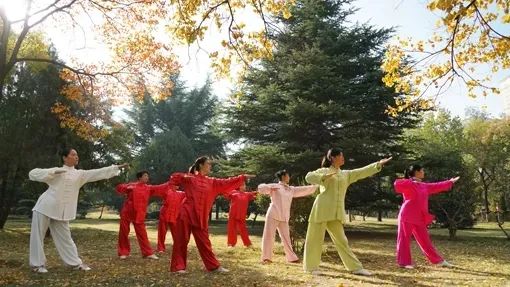
In daily life, consistently practicing fitness Qigong can have health-preserving and wellness effects, strengthening the body while also cultivating character.At the same time, fitness Qigong is also a good choice for home fitness.It is very convenient for everyone to learn fitness Qigong, whether by following community sports instructors or learning through videos at home.Source: Sichuan Social Sports
Scan the code
Follow Us

Sichuan Sports
Competition | Communication | Sharing
Click “Share” or “View” to cheer for Sichuan Sports!


